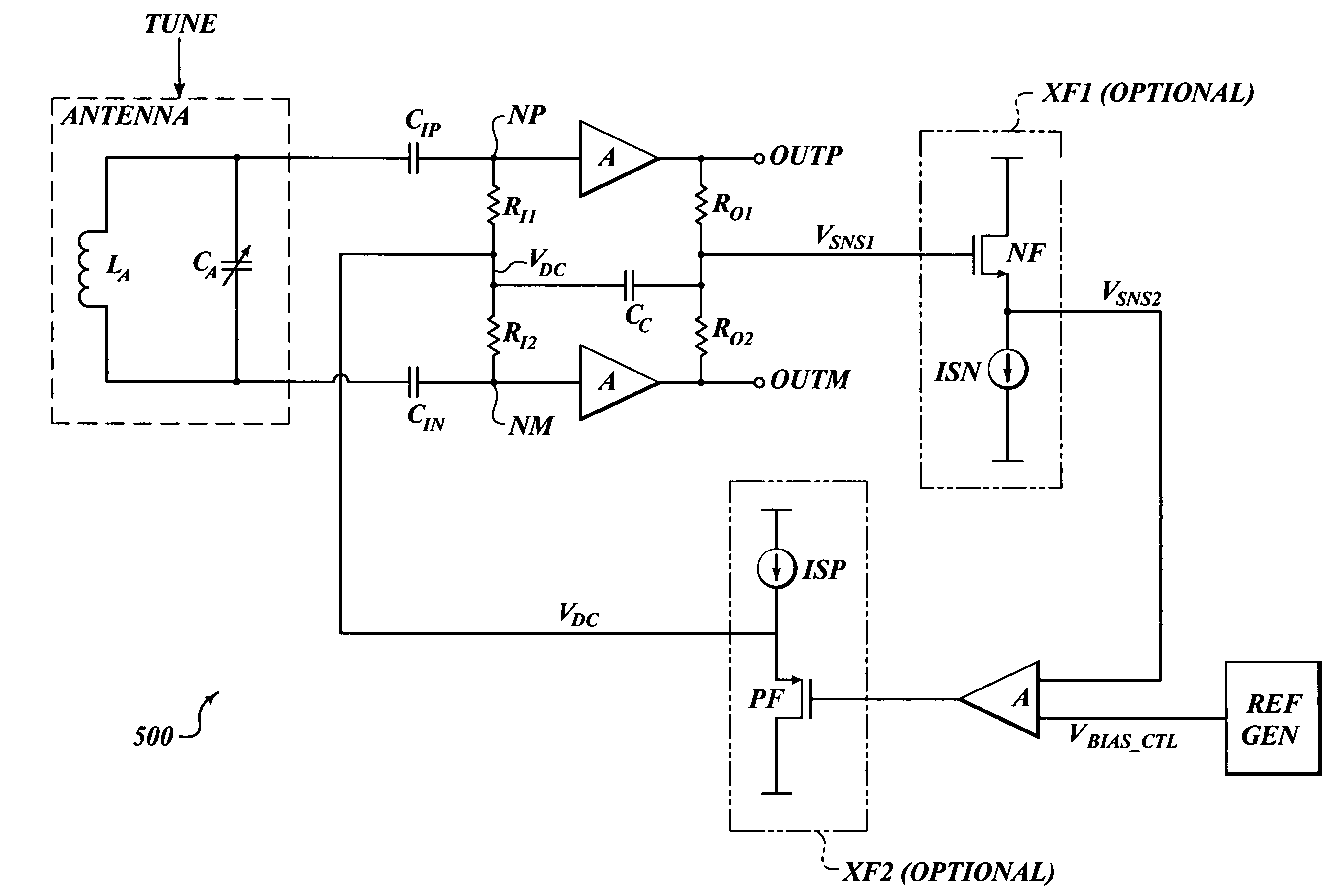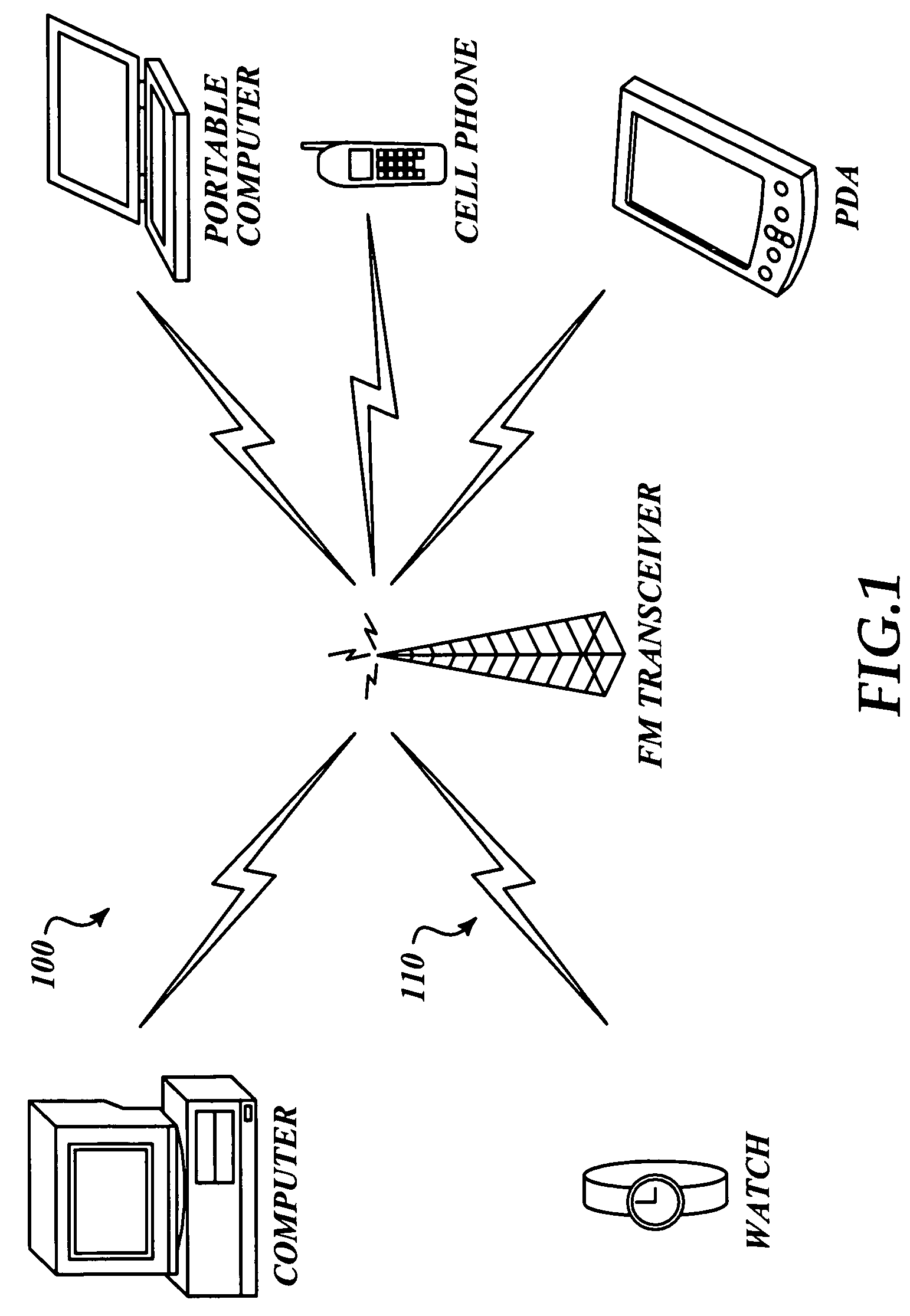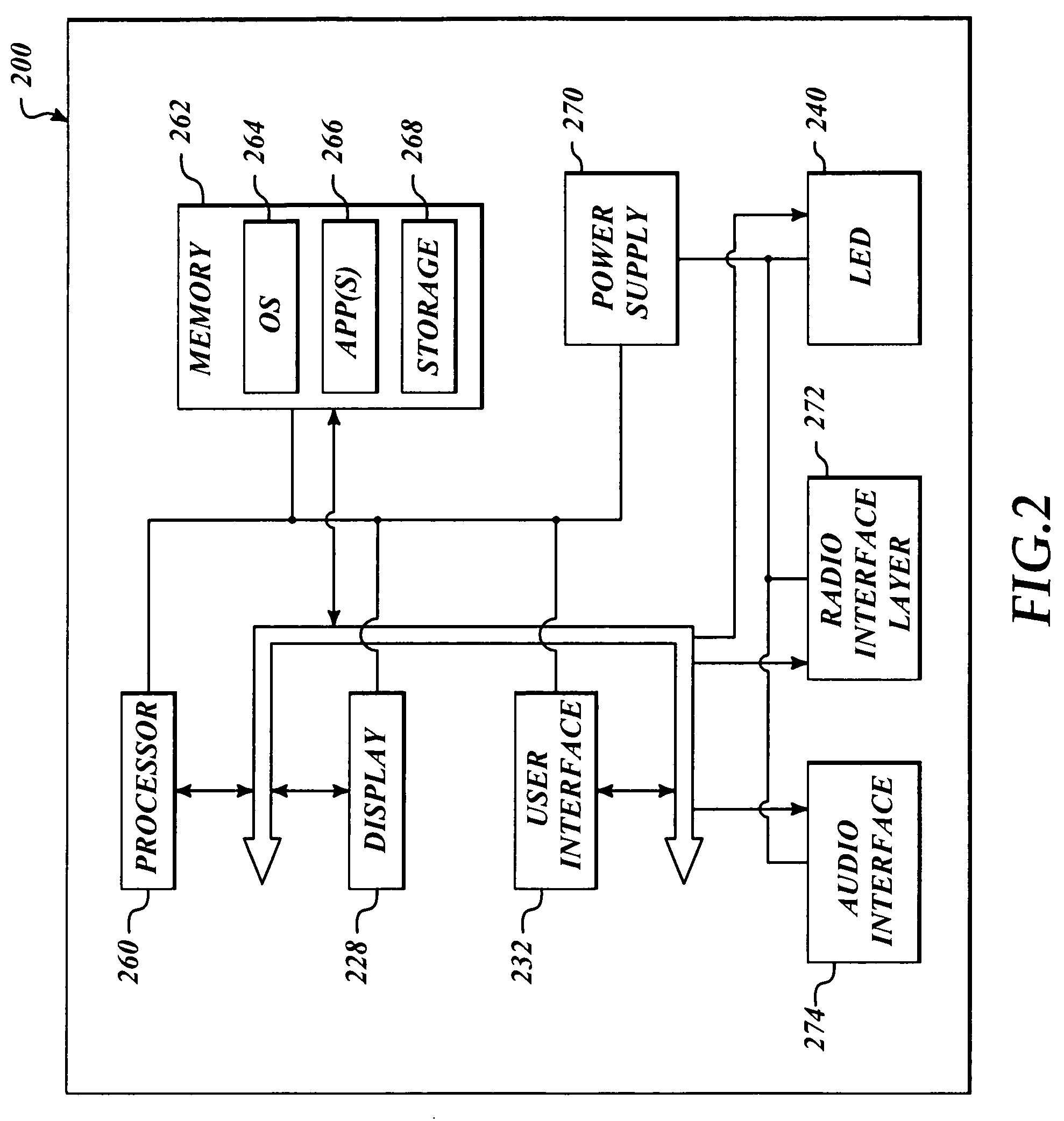Dynamic bias for receiver controlled by radio link quality
a radio link quality and dynamic bias technology, applied in the field of communication technology, can solve the problems of poor antenna performance, limited battery life, affecting the performance of communication subsystems, etc., and achieve the effect of low dc power consumption and power saving in portable electronic devices
- Summary
- Abstract
- Description
- Claims
- Application Information
AI Technical Summary
Benefits of technology
Problems solved by technology
Method used
Image
Examples
example electronic
Device
[0032]An exemplary watch device 300 is shown in FIG. 3. The watch device (300) includes an electronic system (302) that is configured to operate in accordance with at least one aspect of the present disclosure. The electronic system (302) may be contained in the bezel as shown in FIG. 3, or in some other portion of the watch device. The watch device (300) also may include a watchband (304) for attaching the watch to a user's wrist.
[0033]The electronic system (302) includes functionality for operating as either a receiver and / or transceiver type of device. As illustrated in the figure, the electronic system includes a transceiver (306), a microcomputer unit or microprocessor (308), and an analog radio (310). As will be described in detail below, an antenna is connected to the transceiver (306) for emitting and / or receiving information signals. Transactions between the microprocessor (308) and the radio components are mediated over a microprocessor-digital transceiver interface....
example reference
Generators
[0053]FIGS. 7 and 8 are schematic diagrams illustrating example reference generator circuits.
[0054]The reference generator circuit (700) depicted in FIG. 7 includes: a voltage generator (e.g., a band-gap voltage generator), switching circuits SVG and SI-SN, resistor circuits RT and RB1-RBN, and an optional decoder circuit. The voltage reference generator is arranged to provide a voltage (e.g., VRAW) to node N1. Switching circuit SVG is arranged to selectively couple node N1 to node N2 in response to control signal CTLVG. Resistor circuit RT is coupled between node N2 and node N3. Resistor circuit RB1 is coupled between node N3 and node N4. Resistor circuit RB2 is coupled between node N3 and node N5. Resistor circuit RBN is coupled between node N3 and node N6. Switching circuit S1 is arranged to selectively couple node N4 to a power supply voltage (e.g., VDD, VSS, GND, etc.) in response to signal CTL1. Switching circuit S2 is arranged to selectively couple node N5 to the po...
example procedure
Flow
[0060]FIG. 9 illustrates an example procedural flow diagram for an electronic system arranged in accordance with at least one feature of the present disclosure. Processing begins at block 901 and proceeds to block 910.
[0061]At block 910, the link quality is evaluated such as by way of algorithmic processing via a processor, a microprocessor, a digital signal processor (DSP), or a hardware component that is designed to provide similar functionality. Example criteria that may be evaluated at block 910 includes: distortion, inter-modulation distortion, harmonic distortion, interference, noise, signal-to-noise, spurious noise, Gaussian noise, colored noise, white noise, and power consumption, to name a few.
[0062]Processing continues to decision block 920, where a determination of the acceptability of the communication link quality is made. Processing flows to decision block 930 when the link quality is acceptable. Alternatively, processing flows to block 940 when the link quality is...
PUM
 Login to View More
Login to View More Abstract
Description
Claims
Application Information
 Login to View More
Login to View More - R&D
- Intellectual Property
- Life Sciences
- Materials
- Tech Scout
- Unparalleled Data Quality
- Higher Quality Content
- 60% Fewer Hallucinations
Browse by: Latest US Patents, China's latest patents, Technical Efficacy Thesaurus, Application Domain, Technology Topic, Popular Technical Reports.
© 2025 PatSnap. All rights reserved.Legal|Privacy policy|Modern Slavery Act Transparency Statement|Sitemap|About US| Contact US: help@patsnap.com



